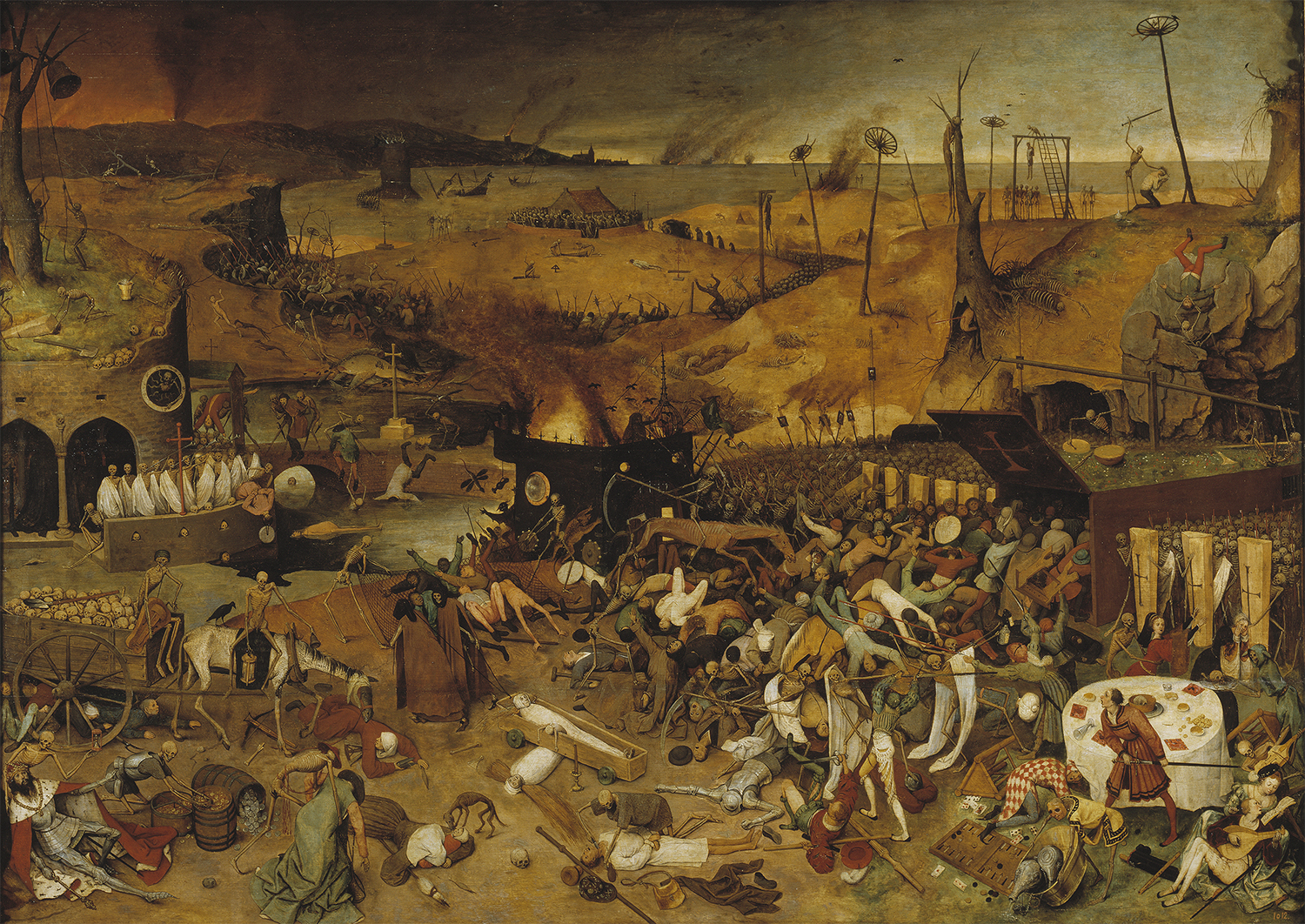The Mutant Genes Behind the Black Death

Each year, 4 million people visit Yosemite National Park in California. Most bring back photos, postcards and an occasional sunburn. But two unlucky visitors this summer got a very different souvenir. They got the plague.
This quintessential medieval disease, caused by the bacterium Yersinia pestis and transmitted most often by fleabites, still surfaces in a handful of cases each year in the western United States, according to the Centers for Disease Control and Prevention. Its historical record is far more macabre. The plague of Justinian from 541 to 543 decimated nearly half the population in the Mediterranean, while the Black Death of the Middle Ages killed one in every three Europeans.
Now researchers are beginning to reveal a surprising genetic history of the plague. A rash of discoveries show how just a small handful of genetic changes — an altered protein here, a mutated gene there — can transform a relatively innocuous stomach bug into a pandemic capable of killing off a large fraction of a continent.
The most recent of these studies, published in June, found that the acquisition of a single gene named pla gave Y. pestis the ability to cause pneumonia, causing a form of plague so lethal that it kills essentially all of those infected who don’t receive antibiotics. In addition, it is also among the most infectious bacteria known. “Yersinia pestis is a pretty kick-ass pathogen,” said Paul Keim, a microbiologist at Northern Arizona University in Flagstaff. “A single bacterium can cause disease in mice. It’s hard to get much more virulent than that.”
The genetic makeover that led to the modern plague is thought to have occurred relatively recently in evolutionary history, anywhere from 1,500 to 20,000 years ago. But last month, a discovery was announced that could extend the history of the plague all the way back to a time before humans. George Poinar Jr., a biologist at Oregon State University in Corvallis, found that a 20-million-year-old flea encased in amber has a plague-like bacterium on its proboscis that could be an ancestor of Y. pestis. While a definitive identification of the bacterium hasn’t been made — and may not even be possible — an ancient ancestor of the Black Death could help reveal the earliest steps in a tortured evolutionary path, and perhaps help pinpoint at what point the most deadly changes occurred.
A Flea Ride
As long as there has been plague, there have been people trying to figure out where it came from. Plague appears in a boom-and-bust cycle, emerging suddenly to cause huge pandemics and then retreating, sometimes for hundreds of years. The abrupt eruption of death with no apparent cause tended to invite theories involving the supernatural.
The reality is nearly as remarkable. Recent genetic work has traced the plague’s evolutionary precursor back to the relatively harmless gastrointestinal pathogen Y. pseudotuberculosis, which only causes mild diarrhea. “Some people don’t even know they have it,” said Wyndham Lathem, a biologist at Northwestern University who has spent his career studying the plague bacterium. “Yersinia pestis can kill you in three days, and only a few changes were required to make this switch.”
Moreover, these changes did not occur very long ago. In several recent studies, researchers compared plague bacteria samples from two pandemics. The Y. pestis DNA recovered from London’s plague pits and from German graves dating from the plague of Justinian turned out to be largely the same. In addition, bacterial samples from modern plague victims around the world reveal very little variation. The findings indicate that Y. pestis hasn’t yet had time to accumulate lots of mutations. “Yersinia pestis is such a recent species that there’s not very much genetic diversity among plague strains, even the ones from historic graveyards,” said Joe Hinnebusch, a plague researcher at the National Institute of Allergy and Infectious Diseases. The bacteria’s murderous adaptations are only a few thousand years old.
But what are these adaptations? In 2004, an international team of researchers published the first full genetic sequence of the plague ancestor Y. pseudotuberculosis. When they compared it to Y. pestis, they found that most of the differences between the two were so-called neutral mutations, changes that did not alter the traits of Y. pestis.
Only a few minor changes stood out. The first was like giving Y. pestis an all-you-can-fly ticket on the bacterium’s favorite ride: the flea. Y. pseudotuberculosis can’t travel on fleas, making it much less infectious than its modern descendant. Hinnebusch showed why it can’t move this way: Y. pseudotuberculosis is deadly to fleas, causing a diarrhea that kills nearly half of them. Y. pestis, on the other hand, gives fleas only a mild illness.
To find out what in the bacteria was causing disease in the fleas, Hinnebusch and Iman Chouikha, a postdoc, chopped up Y. pseudotuberculosis into tiny pieces and fed them to fleas. Only fleas that consumed the bacterium’s protective coat became ill, so the poison had to be located there.
Further detective work published in 2014 in PNAS revealed that the culprit was a protein called urease. This protein is present in Y. pseudotuberculosis, but a genetic mutation stops the Y. pestis bacterium from creating it. When Chouikha and Hinnebusch inserted a functional copy of the urease gene back into Y. pestis and fed these genetically engineered plague microbes to fleas, the tiny arthropods got sick just as they did when they ate pseudotuberculosis. “This shows how very minor changes can have a dramatic effect,” Hinnebusch said.
Clot Stopper
But fleas are only part of the story of the plague’s development. While Hinnebusch was working on urease, Lathem was examining another small genetic change that allowed the plague to defeat one of the body’s main defense mechanisms: blood clots.
When a flea bites into flesh, the body responds by clotting blood to prevent bleeding and promote healing. If a plague bacterium gets trapped in this clot, it can’t multiply and spread itself through its new host. Lathem showed that Y. pestis has a gene called pla that its ancestors lack. This gene encodes for a protein that helps to dissolve blood clots. Without a clot, the bacterium is free to spread to the nearest lymph node, where it makes billions of copies of itself.
Lathem’s work, which was published in Science, showed that pla is required for pneumonic plague, a form of plague that can be transmitted from person to person and can kill its host in under 24 hours. But Lathem didn’t know whether pla was the only factor necessary. He turned to several ancestral strains of Y. pestis that continue to circulate in rodents in the highlands of China and Central Asia, likely the ancestral home of the bacterium. These strains provided an intermediate version between Y. pseudotuberculosis and modern Y. pestis. More importantly, some of these particular strains lacked pla.
When Lathem and Daniel Zimbler, a postdoc, tested the pla-free ancestral strains, they found that these could not cause pneumonic plague. But when they added pla while keeping the rest of the DNA the same, the strains readily caused pneumonic plague. And when they removed pla from modern strains of Y. pestis, the bacteria lost their ability to cause pneumonia. Lathem, Zimbler and colleagues published their results this June in Nature Communications.
“We found the very earliest state at which Yersinia pestis could cause respiratory disease. And as soon as it had pla, it could grow rapidly and cause pneumonia,” Lathem said.
Y. pestis didn’t just acquire pla; the bacterium also changed it. A chance mutation altered one amino acid in pla, which greatly increased its virulence by allowing the bacterium to penetrate more deeply into the body. Once there, it could make more copies of itself, making it more likely to be transmitted to another person, whether by coughing or by fleabite.
The findings change how researchers think about pneumonic plague. The ability to cause pneumonia was thought to have been a last-minute addition to the deadly repertoire of Y. pestis. Lathem’s work suggests that Y. pestis acquired pla, and thus the ability to cause pneumonia, very early. The mutation in pla happened later, transforming a bacterium capable of causing localized outbreaks of disease into the mass killer we know today.
“Our work is pointing to this mutation in pla as one of these Big Bang events in plague,” Lathem said. “It was already ready to cause severe pneumonia, and once it could cause invasive disease, everything could amplify.”
Plague continues to spread, although improvements in pest control, hygiene and antibiotics have dramatically decreased the size of outbreaks and the number of people who die from them. Yet the DNA of these bacteria carries the chilling reminder that the next major pandemic may be only a few mutations away.
This article was reprinted on ScientificAmerican.com.



